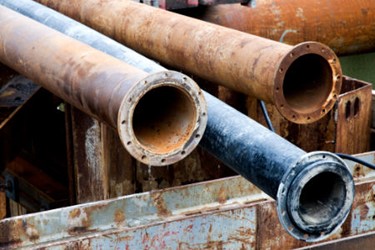What Does The New Lead And Copper Rule Mean For Utilities?

After nearly three decades since it was last modified, the U.S. EPA is set to update its Lead and Copper Rule — the primary regulation determining how much lead and copper is permissible in the public’s drinking water.
As it stands now, the regulation has been criticized for inadequately protecting consumers. It currently mandates an action level of 15 ppb for lead concentrations and a level of 1.3 ppm in more than 10 percent of sampled customer taps for copper concentrations. Ever since a public health crisis was declared in Flint, MI, in 2015, lead contamination in drinking water has been top of mind around the country.
Now, the EPA has issued a proposal meant to improve how utilities test for lead in drinking water and prompt action when it is detected.
“The rules would not change the 15 parts-per-billion limit on lead in water,” per CNN. “They would [however] prohibit practices, such as flushing pipes prior to testing, that water systems have used to get around the rules.”
Perceived loopholes such as removing aerators from faucets before testing and providing residents with small-necked bottles and asking that they fill them slowly before taking samples will also be prohibited.
And although the action level of 15 ppb will not be modified, the EPA is looking to introduce a 10-ppb “trigger level” that, when reached, could require utilities to reevaluate the chemicals it uses in treatment.
In addition, the update will require drinking water utilities to test for lead in childcare facilities and schools, likely because lead consumption has particularly acute health effects for children.
Of course, as drinking water utilities know, the problem of lead contamination can be traced to the existence of outdated lead service lines. And adjusting the Lead and Copper Rule won’t directly address this root cause.
“While [the] sprawling proposal seeks significant changes to the status quo, environmental advocates said the agency’s overhaul fails to take the most important step: requiring the steady removal of the estimated 6 million or more lead service lines that remain underground throughout the nation,” according to The Washington Post.
However, the rule will require utilities to create a public inventory of lead service lines, to take all of its test samples at homes served by lead service lines (as opposed to taking only half of the samples at these homes, as the rule currently mandates) and to replace the utility-controlled portion of a lead service line whenever a resident replaces the lead service line leading to their own home.
The revised rule will still not impose an enforceable “maximum contaminant level” for lead in drinking water.
The proposed rule will be open for a 60-day comment period before its potential implementation.
To read more about how the Lead and Copper Rule effects utilities, visit Water Online’s Drinking Water Regulations And Legislation Solutions Center.
